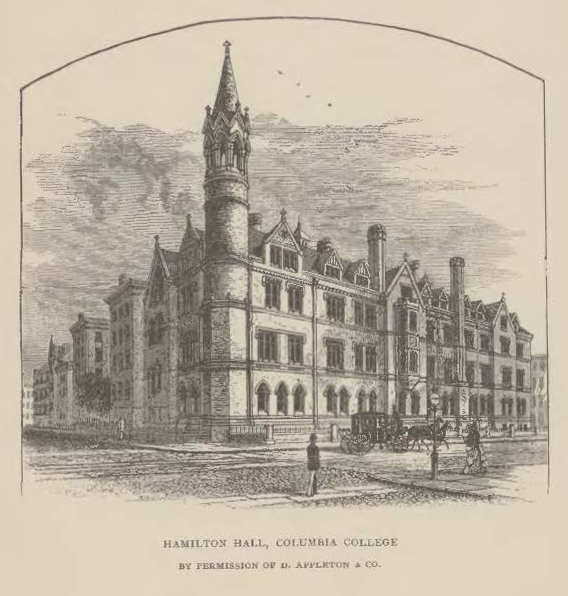Academy’s Past – A New Name for a New Era
The Lyceum of Natural History in the City of New York was renamed The New York Academy of Sciences (the Academy) in 1876 to better encapsulate the work and mission of the organization during this era of broad scientific discovery.
Published April 8, 2025
By Nick Fetty
Digital Content Manager

Mott Memorial Hall | 64 Madison Avenue | 1867-1878
The Lyceum of Natural History in the City of New York (the Lyceum), and its library, moved into Mott Memorial Hall at 64 Madison Avenue in 1867.
During this time, visions of what would become the American Museum of Natural History developed by Lyceum members and associates and other prominent members of the city, including American financier and investment banker J. P. Morgan as well as Theodore Roosevelt, Sr., the father of the future American president. The loss of the Lyceum’s priceless collection in the fire of 1866 added significant impetus for establishing a world-class history museum within the city.
As multiple stakeholders for the natural history museum competed for its design and scope, Lyceum members could refocus their efforts, such as “with keeping the organization intact.” In relatively short order, the museum organizers planned for the new institution to be located adjacent to and on the west side of the newly constructed Central Park, in addition to an art museum on the east side of the park (which would become the Metropolitan Museum of Art), a botanical garden, observatory, and zoo.
An Era of Broad Scientific Discovery
It was in 1876 that the institution’s name was changed from “The Lyceum of Natural History in the City of New York” to “The New York Academy of Sciences” (the Academy). Leading members felt that the term “sciences” better encapsulated the work and mission of the organization during this era of broad scientific discovery beyond natural history. This same year, the Academy voted to allow women to attend meetings and become members, keeping with its founding, egalitarian principles (though much later than by today’s expectations).

Historical records provide relatively little information about Mott Memorial Hall, though it was used by both The New York Genealogical and Biographical Society and the New York State Medical Association. According to the 1886 history account written by Lyceum Recording Secretary Herman Le Roy Fairchild, after ten years in Mott Memorial Hall, the Academy shared space in the New York Academy of Medicine’s West 31st Street facility and then moved to Columbia College’s Hamilton Hall.
A centennial history, penned by John Hendley Barnhart from the New York Botanical Garden and published in The Scientific Monthly in 1917, adds that the Academy also briefly utilized space in Columbia’s old library building, Columbia’s Schermerhorn Hall, in Cooper Union, at the American Society of Mechanical Engineers’ facility on West 31st Street, and in the Chemist Club’s assembly room on West 55th Street. In 1906, the Academy moved to the American Museum of Natural History, where it found a home for the next 44 years.
